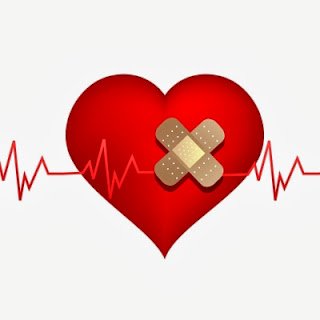{Heart Health} What Is An Angiogram?
Last Updated on August 19, 2020 by Paula
I met a friend a week ago who was very worried about her dad.
He has been complaining occasional chest pains and was advised to have an angiogram.
What is an angiogram?
Is it a major operation? Is there a non-invasive yet equally effective alternative to angiogram?
I had to consult a cousin doctor because it made me wonder what it is.
According to her, an angiogram is not an operation. It is an x-ray of blood vessels.
In my friend’s father’s case, it is a procedure to visualize the arteries on the surface of the heart to see if any
of them are blocked.
When blood flow to heart muscles is diminished, it often manifests as chest pains.
Her father’s doctor is justifiably worried that problems with the coronary arteries are creating his new symptoms.
With the usual chest x-ray, you cannot see coronary arteries. They have to be made visible using a special dye. The dye is delivered through a catheter that is guided from a blood vessel in the upper thigh all the way up to the heart.
Once the catheter is in position, a dye is injected and it goes right into the coronary arteries.
The x-ray is taken at the precise time the dye flows through the arteries. Later, the dye is excreted with the urine.
The angiogram helps to answer the following questions:
- Are there problems in the blood vessels supplying the heart
muscle? - How many vessels are affected?
- How bad is the problem?
The result of the angiogram gives your doctor an idea of what to do next. Treatment can range from adjustments in medication, to widening of the affected vessel, to creating another pathway to supply the heart (bypass surgery).
The results are discussed with the patient and his family, and a decision regarding treatment is made later.
Before the angiogram.
The doctor should explain the procedure clearly to the patient. Coronary artery disease markedly diminishes a person’s functioning.
If treated, the patient would likely be able to do more physical activity, and look forward to more years of healthy living. If not treated, the patient will experience chest pains with less exertion.
During the angiogram.
The patient will be awake during the entire procedure. It is usually done in an x-ray room. Usually a local anesthetic is applied in the area in his leg where a needle is inserted.
The catheter is threaded through this needle. He will feel pain when the needle breaks through the skin – just like an IV line is inserted into a vein in your arm. But the passage of the catheter through the blood vessels is painless.
When the dye is injected, patients sometimes report a brief, warm feeling as it spreads through the heart’s vessels. Several x-rays are taken to follow the flowing dye. He will be asked to hold his breath and be perfectly still so that the images will be sharp.
The entire procedure usually takes about an hour. Afterwards, the catheter is removed and the insertion site is pressed firmly for up to 20 minutes to stop bleeding.
There is usually no need for hospital confinement. But the patient should not be exerting himself for at least a day.
Occasionally check the puncture site to make sure there is no bleeding. He will be asked to drink more liquids to flush out the dye through his kidneys.
There are no food limitations. He should be back to his regular activities by the second day. Possible complications include bleeding or
infection at the site of puncture, allergic reactions to the dye, or problems in excreting the dye among persons with kidney disease. Any invasive procedure entails risk.
New heart imaging technologies are being developed. A new generation of CT scans is able to visualize the heart’s vessels without the need to inject dyes. Ultrasound can visualize the heart to some extent. Ask whether such invasive options are available.<
Keep an open line of communications with the doctor. Do not hesitate to ask for a second opinion to ensure the diagnoses are correct and the options being taken are helpful and necessary.








